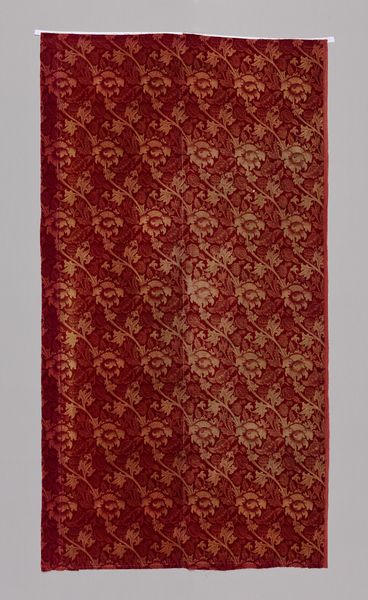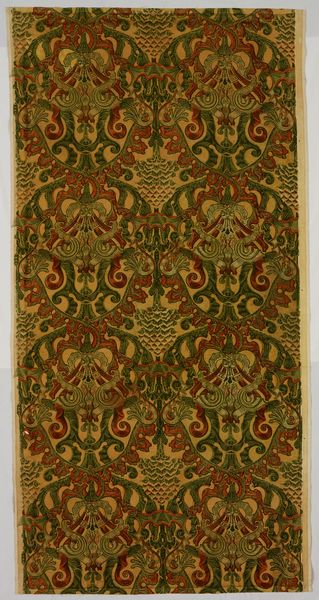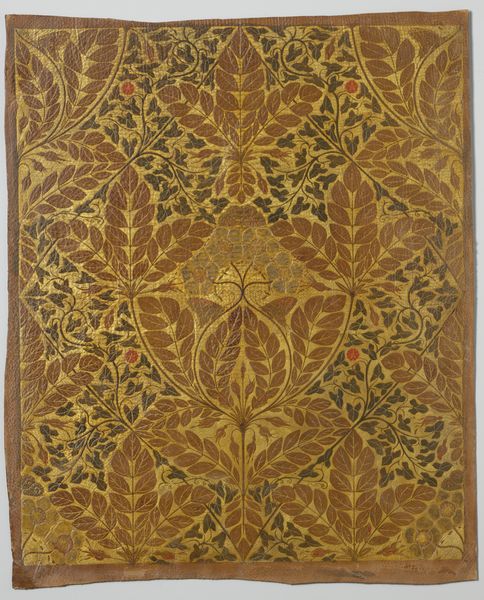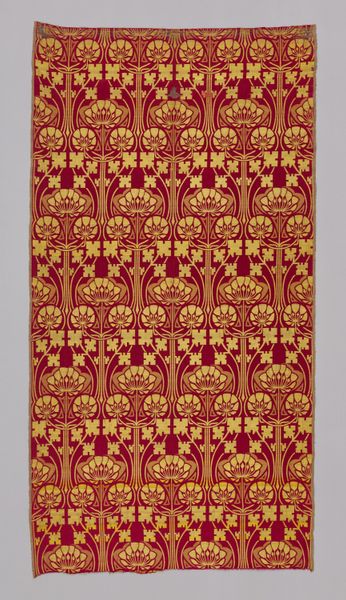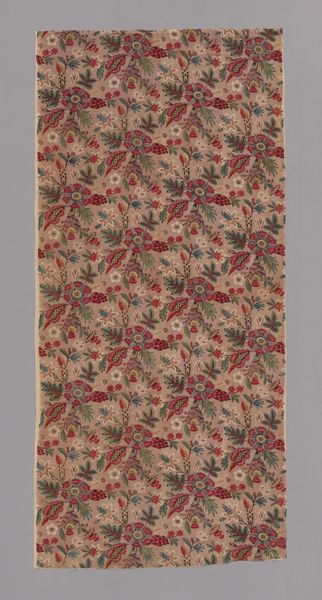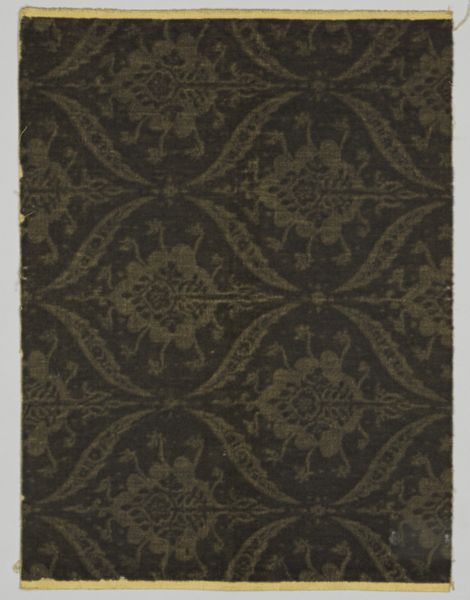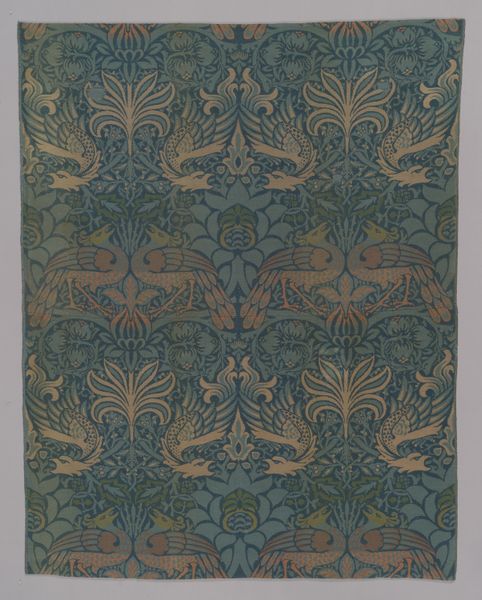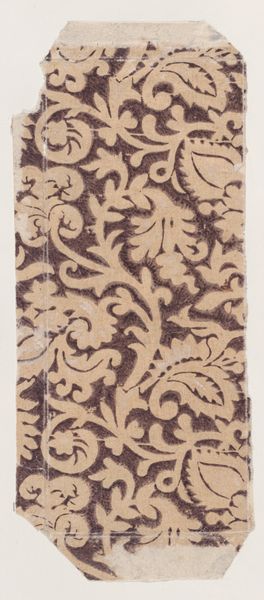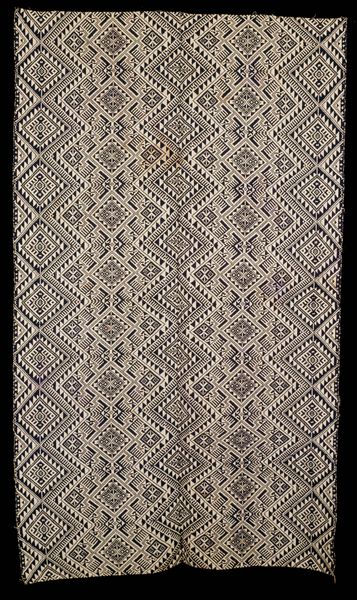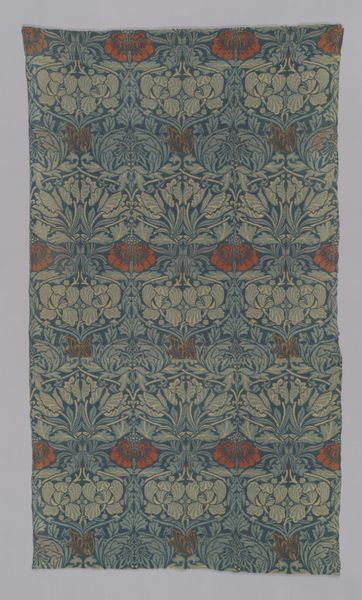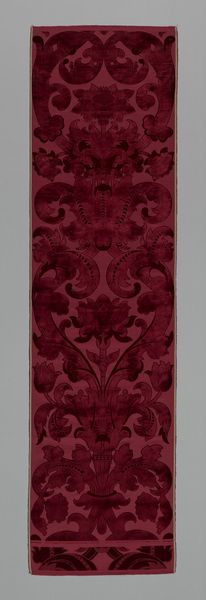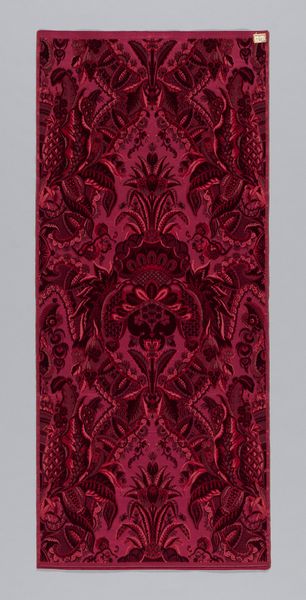
mixed-media, print, weaving, textile
#
mixed-media
#
16_19th-century
# print
#
arts-&-crafts-movement
#
pattern
#
weaving
#
textile
#
flower
#
text
#
decorative-art
Dimensions: 265.5 × 131.1 cm (104 5/8 × 51 5/8 in.) Warp repeat: 55.9 cm (22 in.)
Copyright: Public Domain
Curator: Before us is "Acanthus," a textile piece, possibly dating between 1876 and 1917. It's the work of William Morris, a central figure in the Arts and Crafts movement. Editor: It strikes me as both elegant and slightly oppressive. That dense, repeating pattern in those muted reddish-brown tones—it's very Victorian, isn't it? I can almost feel the weight of those drapes in a dimly lit room. Curator: Absolutely. Morris was consciously reacting against industrial mass production. His designs, like this one, were about bringing handcraftsmanship and beauty back into everyday life. He wanted to democratize access to art, so it wouldn't be confined to elite circles. Editor: So, "democratize" by creating incredibly elaborate and probably expensive textiles? I mean, look at the detail. The acanthus leaves themselves must have taken forever to render in the printing or weaving process. I’m really interested in what the actual making of it was like. Curator: Well, Morris believed in ethical production. He revived traditional techniques, using natural dyes and employing skilled artisans. The Guild he established aimed to provide fulfilling, creative labor, a direct response to the dehumanizing conditions of factories. The museum setting, ironically, removes it from its intended domestic space. Editor: True. And that contrast—the high ideals versus the probable reality of labor needed for a product like this—is fascinating. Were those artisans actually empowered, or were they still just workers, albeit in a prettier setting? It’s also intriguing how we now frame textile work as “art.” Curator: The Arts and Crafts movement played a pivotal role in challenging the hierarchy between fine art and craft. Pieces like “Acanthus” demanded that decorative arts be taken seriously, influencing everything from architecture to book design. The very concept of what constitutes art was at stake. Editor: Looking closer, I appreciate the symmetry and complexity. There's definitely a sensuous, almost organic feel that contrasts with the repetitive nature of the design. It’s less a flat image and more about this layered effect, created through color and texture. I'm starting to get drawn into that Victorian mood. Curator: Considering the era’s anxieties about industrialization and the loss of nature, the revival of botanical motifs feels deliberate. The acanthus itself, historically associated with classical architecture, is symbolic. Editor: It seems to suggest a longing for a more idealized past. Though "idealized" likely meant something very different to those actually doing the labor. A nice paradox, captured in fabric. Curator: Precisely. This piece offers a valuable perspective on the complexities of production and the artistic aspirations of its era. Editor: A testament to the enduring tension between design, production, and social ideals, that this textile quietly embodies.
Comments
No comments
Be the first to comment and join the conversation on the ultimate creative platform.
